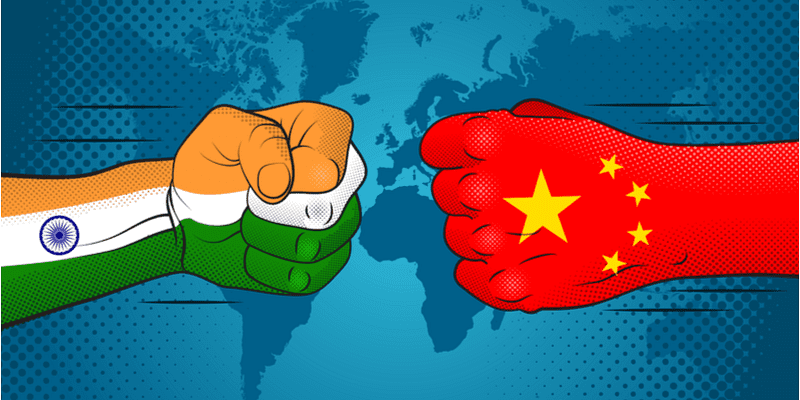
China’s Kra Canal Dream: A Strategic Game Changer in Indo-Pacific and its Implications
Fri, 25 Sep 2020 | Reading Time: 6 minutes

Introduction
There has been a long-standing idea that Isthmus of Kra in Thailand is the most suitable site to excavate a canal connecting the Gulf of Thailand and the Indian Ocean, similar to the Panama Canal or the Suez Canal. This would create a new sea lane in Southeast Asia and would shorten the transit route between the Indian Ocean and the Gulf of Thailand. It would enable ships to move between the Indian and Pacific Oceans without having to pass through the Strait of Malacca. However, the possibility of the Kra Canal becoming a reality remains a controversial issue in Thai domestic politics.
At present, the Strait of Malacca, which flows between Indonesia, Malaysia, and Singapore, serves as a major sea-lane of communication (SLOC) linking the Indian Ocean with the Pacific Ocean through the South China Sea. The maritime safety and security of this critical “choke-point” are, thus, extremely important for international trade and commerce. Non-traditional security (NTS) threats in the region such as piracy, terrorism, transnational crimes and arms proliferation are growing rampantly. In this scenario, the proposed Kra Canal provides an alternative transit route to bypass Malacca Strait. The proposed Canal would be a cost-effective and shortened route in comparison to the other two alternative maritime routes passing through Sunda and Lombok.
In recent times, China’s Maritime Silk Road initiative has renewed its attention on the possibility of construction of the Kra Canal. China is enormously interested in financing the project as over 80 percent of Chinese oil imports flow pass through the Malacca Strait. Given the present geopolitical environment in the region, the possible construction of the Kra Canal would pose certain geopolitical and security concerns in the Indo-Pacific region. The article provides a strategic assessment of the impact of the construction of the Kra Canal, focussing its impact on regional security.
The Kra Canal project as part of BRI
In the era of renewed great power competition amid Covid19 pandemic, the Kra Canal project has swept back into vogue again with China’s interest to finance regional infrastructure projects such as the Kra canal as part of six major economic corridors under the Belt and Road Initiative (BRI). In 2013, China announced BRI as a significant geostrategic initiative to develop closer ties with various countries by establishing a development-led trade network. This requires a massive infrastructure construction programme complemented by bilateral commitments covering trade and investment. Chinese support and finance for the Kra Canal as part of its BRI initiative amplifies the strategic significance of the project.
New Navigation Route to Overcome “Malacca Dilemma”
China’s economic rise and growing reliance on energy imports, particularly oil have placed energy security at the top of its maritime security agenda. China became the world’s largest oil importer in 2017, surpassing the US. This critical dependence on oil imports for China’s economic growth created what is known as “The Malacca Dilemma,” a strategic concept coined in 2003 by then-Chinese President Hu Jintao. This represents the potential factors that could hinder China’s economic development through choking oil imports from the Malacca Strait.
Currently, about eighty percent of China’s oil has to pass through the Strait of Malacca During the time of the conflict, the Malacca Strait could easily be blocked by an adversary state, cutting off China from crucial oil supply. It underscores the problem of sea routes crucial to China’s energy security, especially the Malacca Straits, being subject to interdiction from adversaries and piracy and terrorist activities. In response, China has taken several policy measures to reduce its dependency on Malacca Strait. One such project is the China-Pakistan Economic Corridor (CPEC), presently under construction at a cost of $46 billion, which is aimed over 15 years to create an economic corridor between Gwadar Port to China’s Xinjiang region through the 2,700 km long highway from Kashgar to Gwadar.
The most effective way to address the Malacca Dilemma would be to develop an alternative shipping route through the construction of the Kra isthmus canal in Thailand. Thus, China has the strategic interest to finance the Kra Canal project in Thailand consonant to its ‘Grand Strategy’ of a Maritime Silk Road under the Belt and Road Initiative (BRI).
The Kra Canal project would involve excavating a waterway across the 135-km isthmus at the estimated cost of about $28bn to create a new navigational route, linking the Gulf of Thailand in the Pacific Ocean directly to the Indian Ocean. The new navigation link will enable ships to shorten the transit route of about 1200 kilometres bypassing Malacca Strait, thereby saving two-to-three days sailing time, via Malacca Straits.
Emerging Strategic Scenario in the Indo-Pacific region
The 21st century is witnessing the emergence of a new geopolitical strategic landscape in the Indo-Pacific region. While the USA continues to dominate the region, its influence continues to be diminishing. Nevertheless, the US continues to deepen its engagement in the Indo-Pacific region as a top foreign policy priority. In June 2019, the US Department of Defence issued the Indo-Pacific Strategy Report, which asserted that Inter-state strategic competition is the primary concern for U.S. national security. This was followed by the US State Department policy document named “A Free and Open Indo-Pacific: Advancing a Shared Vision”, issued in November 2019.
In its pursuit to retain its influence, the US is strengthening and deepening partnerships with the ASEAN, the US allies and major powers in the Indo-Pacific region, especially, India. The US-India strategic partnership is reaching new heights based on a shared vision for the Indo-Pacific. The US considers that its vision and approach in the Indo-Pacific region aligns closely with India’s Act East Policy. The 2018 Asia Reassurance Initiative Act (ARIA) provides a comprehensive framework for India-US strategic partnership in promoting peace and security in the Indo-Pacific region. In September 2019, the US-Australia-India-Japan Quadrilateral Consultations (the so-called “QUAD” group) marked a new milestone with the first ministerial-level meeting of the QUAD.
Amid Covid19, it has been recently reported that China is out of Kra Canal Project and that the Quad countries, namely, India, Australia and the US has shown interest to construct the proposed Kra Canal to challenge Chinese dominance in Indo-Pacific. China watchers view this development as causing a major blow to the Chinese strategic goals in the region. However, one has to be cautious in assessing the impact of this scenario on the geopolitical situation in the Indo- Pacific as the Kra Canal will lie within the territory of Thailand. It will not be a natural maritime waterway and thus not governed by the principle of freedom of navigation, but Thailand domestic laws. This condition, unlike the Malacca Strait, may impede the movement of the US Naval ships and submarines through the proposed Kra Canal in Indo-Pacific region.
China, on the other hand, is rising with a rapidly expanding economy and increasing influence regionally as well as globally. China’s growing use of economic, political, and military power to alter the global and regional geopolitical balance, especially in neighbouring countries. China has a strategic interest in financing and constructing the Kra Canal as part of its BRI initiative. It shows that the Chinese ‘Grand Strategy’ is to use BRI initiative as a strategic tool to reshape the international order in its favour, especially in the Indo-Pacific region.
China’s Kra Canal dream as a Game-Changer in Indo-Pacific and its Implications
The construction of the Kra Canal would be a maritime and geopolitical game-changer upon completion in the Indo-Pacific region. Concerning legality of the project, it is pertinent to note that under international law, states are free to build artificial waterways on their territory, including waterways that connect two seas and thus shorten the distance between them. However, the geopolitics of the region may result in significant opposition from the littoral states, namely, Indonesia, Malaysia and Singapore.
China intends to achieve three major objectives through the Kra Canal project. Firstly, it enable China to secure energy security, while also serving its domestic economic requirements; Secondly, it will help China to overcome the “Malacca Dilemma” and strengthen its maritime security; and thirdly, utilise Kra Canal project as part of Belt and Road Initiative (BRI) to achieve maritime dominance in the Indo-Pacific region.
From a strategic perspective, the proposed project would have a major impact on maritime and strategic landscape in the region and thereby altering the present balance of power in the Indo-Pacific – Firstly, it could move the focus of maritime trade away from the Malacca Strait. It will negatively affect Singapore’s position as a maritime transhipment hub. Secondly, it could also serve as an important strategic transit route for China to overcome the “Malacca Dilemma”. Thirdly, present geopolitical stability in Indo-Pacific is likely to be significantly affected. The Kra canal will be limiting the passage of ships through the US-controlled Malacca Straits, thereby paving the way for China up surging the US naval power in the region. Chinese ingress into the Andaman Sea will be increasing India’s strategic vulnerability. In addition, it would provide alternative transit route to the increasingly congested, terrorism-prone and piracy infested Straits of Malacca, thereby enhancing safety and security of SLOCs in the region. Chinese interest in the Kra Canal project poses a major challenge to US dominance in the Indo-Pacific region. In particular, it has the potential to diminish the US Navy’s ability to act as “Net Security Provider” in the Western Pacific region.
With regard to India, the construction of the Kra Canal will increase its strategic vulnerability in the region, thereby posing a potential threat to India’s long-term strategic interests in the Indo-Pacific region. It is also likely to seriously impact India’s ambition for becoming predominant naval power in the Indian Ocean and leverage the ensuing maritime power in relations with major maritime power states, especially the US, China, Japan, Australia. In conclusion, the construction of the Kra Canal will significantly alter the geopolitical and strategic environment in the Indo-Pacific region and will further accelerate the great power rivalry in the region.
The views expressed are of the author and may or may not represent the views and policies of Chanakya Forum.
Disclaimer
The opinions expressed in this article are the author’s own and do not reflect the views of Chanakya Forum. All information provided in this article including timeliness, completeness, accuracy, suitability or validity of information referenced therein, is the sole responsibility of the author. www.chanakyaforum.com does not assume any responsibility for the same.
Chanakya Forum is now on . Click here to join our channel (@ChanakyaForum) and stay updated with the latest headlines and articles.
Important
We work round the clock to bring you the finest articles and updates from around the world. There is a team that works tirelessly to ensure that you have a seamless reading experience. But all this costs money. Please support us so that we keep doing what we do best. Happy Reading
Support Us




















POST COMMENTS (1)
Mohit bhat